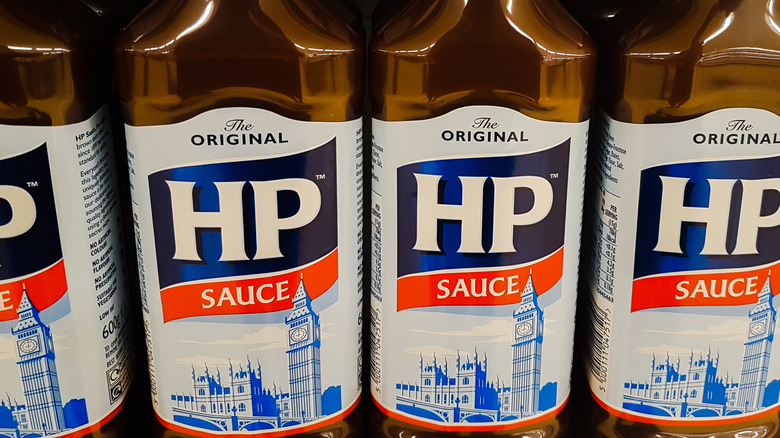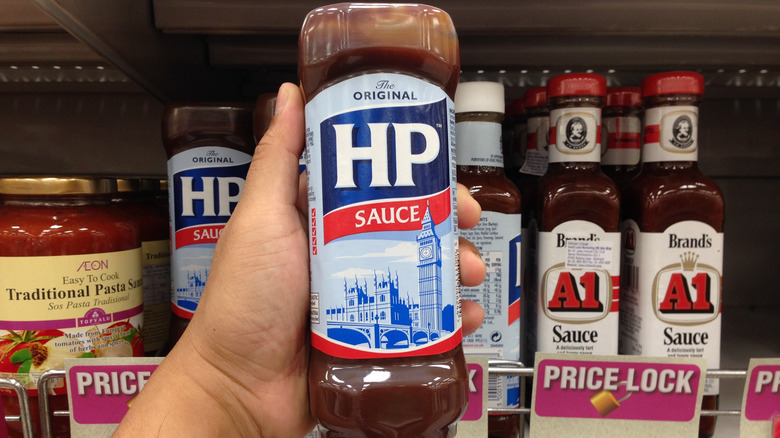How A Bad Debt Led To HP Sauce's Existence
Most sauces are concocted to fit a certain flavor profile — a cook wants something to add a bit of spiciness to their dish, or an element of creaminess, perhaps a dash of acidity, and they craft a sauce that delivers those components. However, H.P. Sauce has a different kind of origin story. It was invented by a man named Frederick Gibson Garton, who was a grocer with financial woes.
In the late 1800s, Garton created a sauce that incorporated malt vinegar, tamarind (a unique fruit you might be missing out on), tomatoes, molasses, and soy. This combination had notes of salt, acidity, fruitiness, and more. He started bottling the sauce, and it apparently became quite popular. Word spread that folks were even using it at the Houses of Parliament. Unfortunately for Garton, he was in debt to Edwin Samson Moore, a founder of the Midlands Vinegar Company.
Garton decided to sell the recipe and trademarks for £150 to settle his debt. In 1903, Moore began bottling the sauce and rebranded it slightly with a new lithograph image of the Houses of Parliament gracing the packaging. The rest is history. Nowadays, fans go through about 28 million bottles of the product per year. If you haven't tasted it, just know it's one of those British foods you need to try. It pairs well with eggs, burgers, fries, and even steaks. If you want to compare H.P. with other options, it's included in our ranking of store-bought steak sauces.
The bottles embody the sauce's British roots
English expats (or those curious about this piece of culinary history) can find bottles of H.P. sauce at many grocery stores around the world, as it's no longer a product exclusive to the U.K. However, its name pays homage to its British roots. H.P. stands for "Houses of Parliament", inspired by the claim that the first iterations of the sauce were being dished up at a restaurant within the iconic British building. Over a century after it was used to pay off a debt, the sauce had become such a hot commodity that in 2005 Heinz took over the H.P. brand.
While keeping the original version, the brand has also adapted the recipe to meet the market's demands. For example, it added a version with reduced sugar and salt. The product's contents aren't the only thing that's gotten a shake up. The iconic pale blue bottle of brown sauce has also had different images featuring famed British structures over the years, including an iteration that highlighted the clock tower Big Ben and an updated version that showed it with scaffolding.

